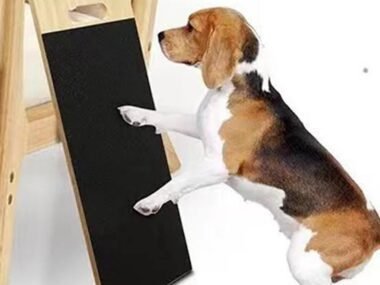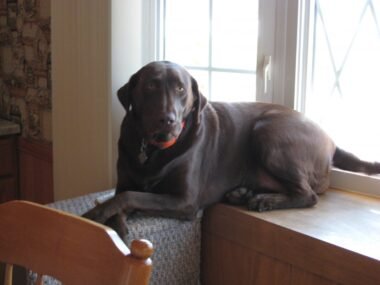Why Massage Your Dog to Help Them Poop?
Have you ever noticed your dog straining to go number two but just can’t seem to get the job done? Massaging their tummy and hindquarters can really help stimulate their bowels and make pooping easier.
•It relaxes them. Gentle massage releases endorphins that calm your dog and help their muscles relax. When they’re tense, it’s harder for them to go.
•It stimulates the right areas. Massaging around the colon, anal area and lower abdomen activates the nerves and muscles responsible for elimination. Circular motions work best.
•It provides relief from discomfort. If your dog seems uncomfortable, massage can ease any pain from gas, constipation or other issues making it difficult to poop.
•It strengthens the abdominal muscles. Regular massage helps tone your dog’s core muscles involved in defecation, making the actual act of pooping more efficient and effective.
While massaging, speak in a soothing tone to keep your dog relaxed. Start with light pressure, gradually increasing intensity based on their reaction. Massage for 5 to 10 minutes, a few times per day. If your dog doesn’t go right away, try taking them for a short walk—the movement and fresh air may further stimulate their system.

Materials You Will Need
There are only a few easy supplies you’ll need to massage your dog
- Coconut or olive oil. Both are natural lubricants that will make the massage more effective and comfortable for your dog. Apply the oil to your hands, not directly to their rear end.
- Disposable gloves (optional). Especially if you have long nails or don’t want to get messy. Latex gloves work fine, but avoid anything scented.
- Paper towels, baby wipes or damp washcloth. To clean up any mess and wipe your dog’s rear end when you’re done.
- Treats (optional). If your dog has a favorite treat, have some on hand to help keep them relaxed during the process. But only give the treat after they’ve gone to the bathroom to avoid confusion.
- A quiet, distraction-free area. Choose a place away from noise and activity in your home where your dog can relax. Their crate or a spare room works well.
The key is to keep everything comfortable and low stress for your furry friend. With the proper technique and these few supplies, you’ll get your pup pooping in no time. Isn’t it worth it for your best bud? Now go get your massage on!
Read Also: Neutering Your Dog: How Long Until the Testosterone Is Gone?
Finding the Right Massage Position
The position you put your dog in during massage can make a big difference in their comfort and ability to relax and go to the bathroom. Here are some tips for finding the right pose:
1. Standing Up
Gently lifting your dog’s hind legs while they’re standing can help them get into the right position to go. Support their back or chest with one arm and lift their hind legs with your other hand, holding them up and forward. This stance elongates their spine and abdomen, making it easier for them to pass stool. Release their legs once they’re done.
2. On Their Side
Having your dog lie on their side, especially the left side, can make bowel movements more achievable due to the anatomical position of their intestines. Slowly and carefully roll your dog onto their side, supporting their head and neck to keep them comfortable. Gently massage their lower belly from the rib cage back to help stool move down.
- Make sure they are on a towel, pee pad or other protective layer in case they go to the bathroom during the massage.
- Offer praise and treats when they go to positively reinforce this position for future elimination.
3. Belly Up or “Begging”
For some dogs, lying on their back with legs in the air can trigger the urge to defecate. Gently roll your dog onto their back and lift their hind legs, bending them at the knee, so their paws are in the air. This posture causes gravity to pull on their abdomen and internal organs, stimulating the rectum. Offer support under their back and head to keep them balanced.
• This may not be suitable or comfortable for all dogs, especially those with back issues, so gage your dog’s reaction and don’t force them to stay if they become distressed.
Trying different massage positions and figuring out what your dog responds best to is key. With regular practice of massage and positive reinforcement, your dog may get better at going to the bathroom on command and in the proper place. Consistency and patience are key!
Read Also: Achieving Perfect Harmony: Balanced Dog Training
Techniques to Help Your Dog Relax
1. Gentle petting
Gently petting and massaging your dog can help relax them and make them more comfortable going to the bathroom. Start by slowly and softly petting their back, sides and belly. Speak in a calm, soothing tone as you pet them. The physical touch and gentle sounds will help put them at ease.
2. Tummy rubs
Giving your dog a belly rub is one of the most effective ways to relax them. Slowly rub your dog’s belly using circular motions, applying light pressure. Pay extra attention to the area below their belly button, as this can help stimulate their bowels. Belly rubs release endorphins that naturally calm and soothe your dog.
3. Light pressure
Apply light, gentle pressure to your dog’s hind legs, lower back and the base of their tail. These areas contain acupressure points that can help stimulate bowel movements when pressure is applied. Use your fingertips to slowly rub and apply pressure to these areas. Start with lighter pressure and gradually increase to your dog’s comfort level. Massaging these areas in circular motions, working from the top of the back down, can be very soothing and help your dog pass stool.
• Hind legs – Gently rub the inner thighs, behind the knees and along the hamstrings.
• Lower back – Use wide, circular motions on either side of the spine, in the area just above the tail.
• Base of tail – Gently grasp the base of the tail and apply firm but gentle pressure, slowly massaging the area. Release and repeat.
With patience and regular practice of these massage techniques, your dog should feel more at ease going to the bathroom. The physical stimulation and relaxation from massage helps make the experience easier and less stressful for many dogs. Be sure to give your dog plenty of praise and a small treat after they go to the bathroom to positively reinforce their good behavior!
FAQs
Will Massaging My Dog Hurt Them?
Many dog owners wonder if massaging their dog could cause them any pain or discomfort. It’s a valid concern, but rest assured that massaging is typically quite safe and enjoyable for most dogs when done properly.
1. Go Slowly and Gently
The key is to start slowly and gently, especially if your dog isn’t used to being massaged. Begin with light, broad strokes to help them relax. Pay attention to your dog’s body language and reactions to make sure they seem comfortable. If they pull away or seem tense, take a break and try again another time.
2. Watch Sensitive Areas
Be very gentle when massaging sensitive areas like ears, paws, tail, and joints. These areas have many nerves and muscles, so too much pressure could be painful for your dog. It’s best to avoid massaging a dog’s abdomen, as this area can be uncomfortable for many dogs.
3. Look for Signs of Enjoyment
Most dogs will show signs they are enjoying the massage, such as:
- Relaxed body posture
- Closing their eyes
- Gentle panting
- Leaning into your hands
These are good indications your dog is comfortable and the massage pressure and technique are just right. If at any point your dog seems distressed or tries to move away, stop the massage immediately.
When to See a Vet
While massage is typically very safe, you should consult your vet before massaging a dog with any medical conditions like arthritis, injuries or wounds. They can advise you on any precautions to take or areas to avoid. It’s also a good idea for any dog to get checked out by a vet first to rule out any undiagnosed medical issues before starting a regular massage routine.
By going slowly, being attentive to your dog’s signals, and avoiding sensitive areas, massaging your dog should be an enjoyable experience for you both. But when in doubt, always check with your vet. Your dog’s health and comfort should be top priority.





